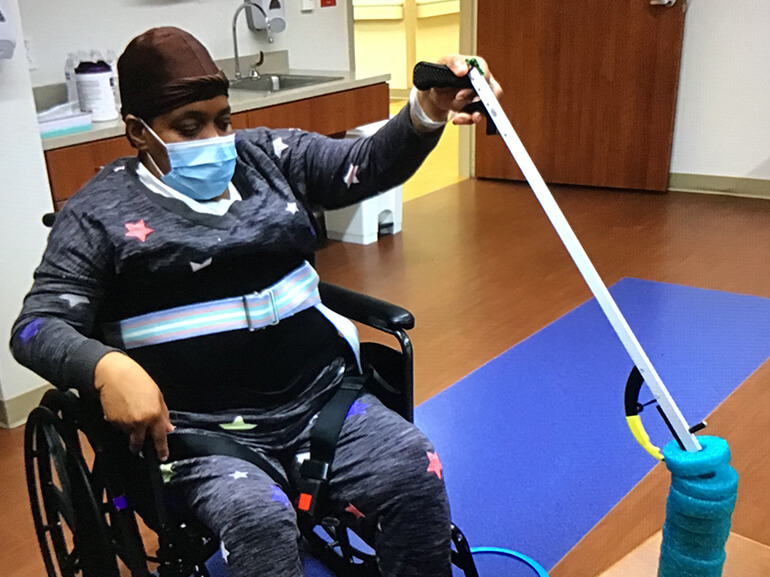Sargie's Story

Sargie Hubbard, 49, lives with her mother, Patricia, and was previously employed at the Honda Parts factory in Alabama. Sargie moved to Mississippi two and a half years ago to help care for her mother following surgery. However, Sargie recently began experiencing medical struggles of her own.
Although Sargie recalls experiencing back problems 20 years ago, her recent journey began when she began having problems walking upright. She went to her primary care physician for an injection that gave her relief in the past, but this time the injection had no effect. Her condition only worsened, and following a fall from her sister’s car, Sargie was taken by ambulance to Meritt Health Wesley in Hattiesburg, MS.
She was admitted and underwent emergency spine surgery. Post-surgery, she acquired an abscess on her spine and transferred to Select Specialty Hospital in Gulfport, MS, for IV antibiotic therapy. Upon completion, Sargie was found to have blood clots in both her left leg and lungs. After treatment, a repeat CT scan showed the blood clots were still there. As a result, Sargie underwent yet another surgical procedure, this time for placement of an inferior vena cava (IVC) filter, a small device that can stop blood clots from traveling to the lungs. Following that, she transferred once more, this time to Memorial Hospital in Gulfport to undergo more spinal surgeries. Once medically stable, doctors recommended a regimented inpatient rehabilitation program, and Sargie chose Northshore Rehabilitation Hospital.
At the time of her admission, Sargie was unable to perform daily living activities independently or walk after being mostly bed-bound for several months. Sargie faced many obstacles to recovery, but she was determined to get back 80 – 100 percent of her prior level of function.
A few days after her arrival at Northshore Rehabilitation Hospital, Sargie knew she had made the right decision as she began making excellent progress toward to rehabilitation goals. “I knew God had put me where I needed to be to get healed,” said Sargie.
She credits her progress to several different therapeutic activities and exercises that helped with leg strength and control, such as the SciFit seated stepper and therapy resistance bands. She also utilized parallel bars to increase balance and standing endurance, then progressed to walking with a walker. “I did so amazing with the walker,” Sargie recalled.
Occupational therapists taught Sargie how to dress herself while in bed and a sitting position by using a shoe aid, grabber and sock helper. She also worked on upper extremity strengthening and endurance with free weights and an arm bicycle. Sargie also participated in group therapy sessions with a focus on upper extremity strength and coordination. The groups also addressed her community reintegration and social interaction which are very important after spending so much time in hospitals.
Although distance limited her family’s ability to visit in-person, Sargie received much needed emotional support from them, particularly from her brother who called often and repeated encouraging words back to her that she had given him over the years.
After 33 days at Northshore Rehabilitation Hospital, Sargie was ready to return home. She was most looking forward to getting back to her everyday life. “I know it’s going to be different because I’m different, but it’s going to be a good thing,” said Sargie. She was also looking forward to celebrating her son’s graduation from Ole Miss University.
Upon discharge, Sargie was able to walk with a rolling walker and could complete her self-care activities, such as dressing and bathing, with minimal assistance. Sargie still has some recovery ahead of her, but she is confident that with continued home therapy, then progressing to outpatient physical therapy, she will reach the goals she hoped for and regain her normal life.
Reflecting on her overall experience at Northshore Rehabilitation Hospital, Sargie attributes a large part of her recovery to the caring and encouraging therapy team. She recalls a memory of being in the therapy gym, concentrating on her steps, and focusing on walking. When she realized the room had gone quiet, she paused and looked up to find all of the therapy staff watching and then applauding her progress. Her journey has taught her about herself as well. She states, “I’ve changed mentally as well as physically; this whole situation has given me a new outlook on life.”